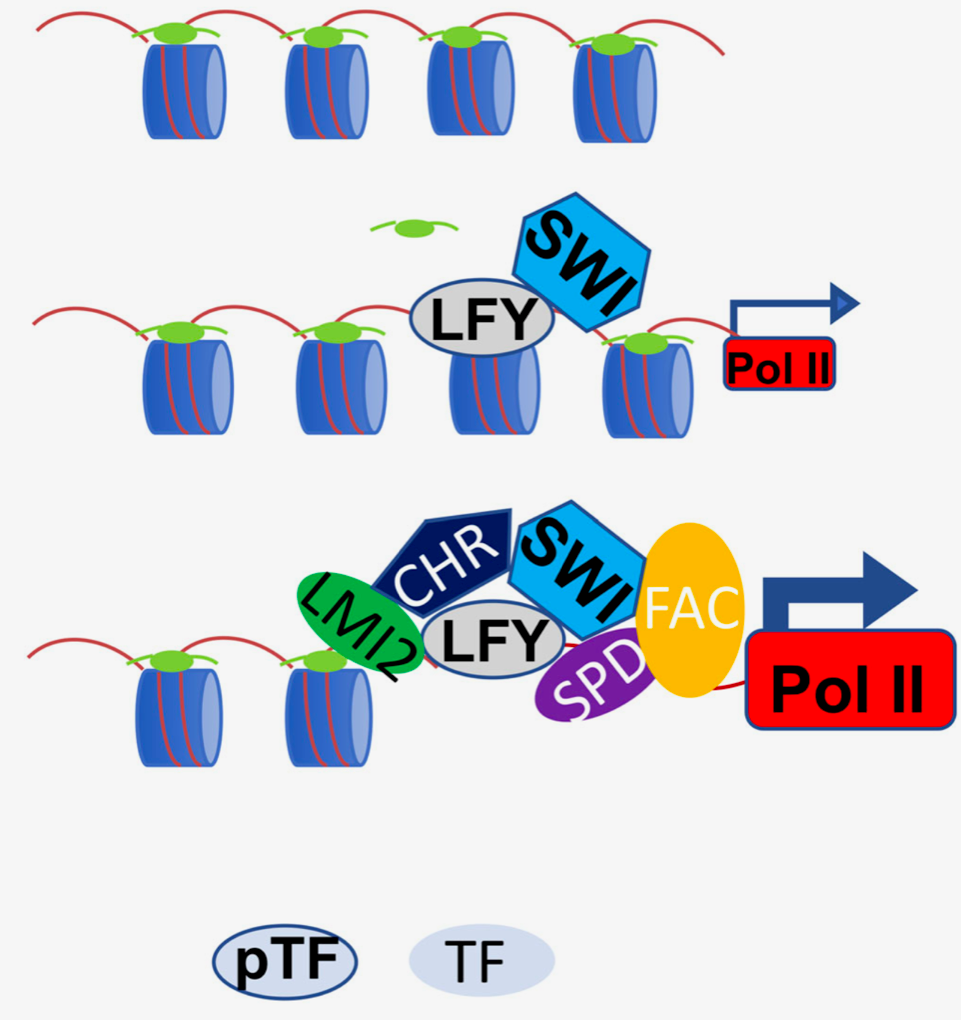
LEAFY is a pioneer transcription factor and licenses cell reprogramming to floral fate (Nature Comms)
Master transcription factors (TFs) can activate specific genetic programs to reprogram cellular fate in the context of open chromatin. A special class of these proteins known as pioneer TFs are defined by their ability to trigger cell fate reprogramming by binding their cognate cis motifs in a nucleosome…

Longer telomeres, earlier flowering: Natural variation in plant telomere length is associated with flowering time (Plant Cell)
Telomeres (from Greek words meaning "end part") are highly repetitive DNA sequences at chromosome ends that guard against degeneration during cell division. Though all eukaryotes possess telomeres, extensive interspecific variation exists for telomere lengths (300bp in yeast to 150kb in tobacco). Telomere…
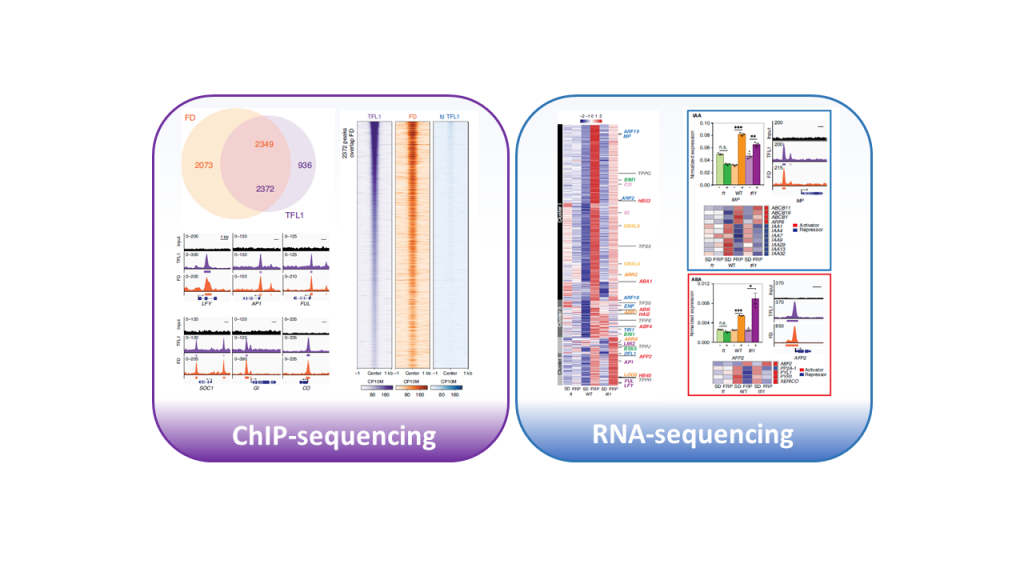
TERMINAL FLOWER 1-FD complex target genes and competition with FLOWERING LOCUS T (Nat. Commun.)
The onset of reproductive development is tightly regulated in response to environmental cues as early and delayed flowering greatly affects seed production. In Arabidopsis, the timing of flower formation is controlled by members of the Phosphatidyl Ethanolamine-Binding Protein (PEBP) family: TERMINAL…

Review: La vie en roses, lilies, and other flowers: the floral microbiome (Annu. Rev. Ecol. Evol. Syst.)
Beyond their beautiful colors, fragrances and shapes, flowers also can host a great variety of life forms. A diverse community of bacteria, fungi, protozoa, and other organisms live in the flowers. A recent work by Rachel Vannette summarizes the current studies about the floral microbiome, highlighting…
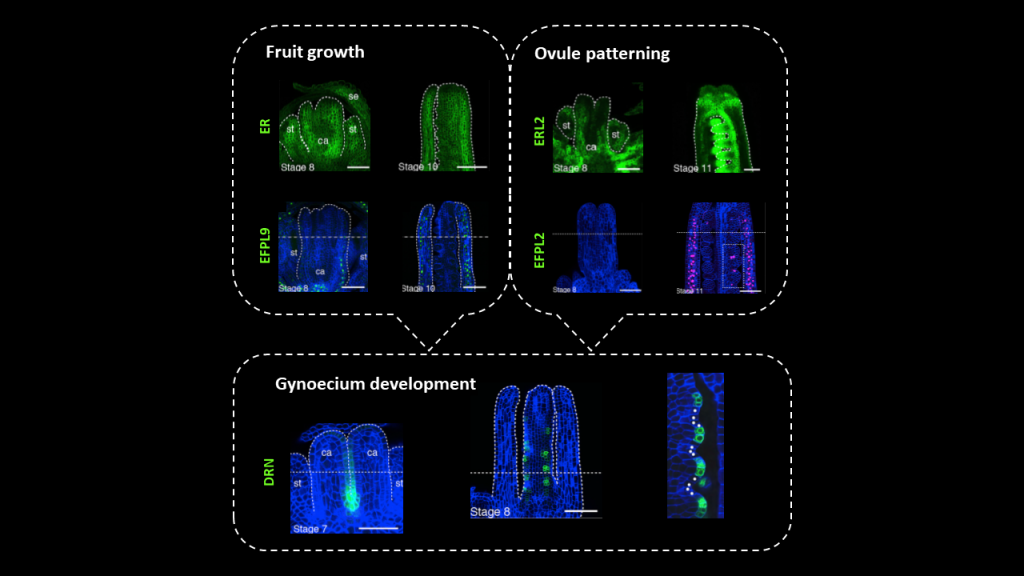
A peptide pair coordinates regular ovule initiation patterns with seed number and fruit size (Curr. Biol.)
In Arabidopsis pistils, ovule primordia differentiate from the placenta - meristematic tissue within the two fused carpels - in parallel rows with a regular spacing of 2-4 cells. Since fruit growth and ovule formation determine the maximum number of seeds enclosed in a silique, these two processes…

Review. Imaging flowers: a guide to current microscopy and tomography techniques to study flower development (J. Exp. Bot.)
Flowers bear the reproductive organs and determine the reproductive success of plants by producing fruits and seeds. Flowers usually include four whorls of organs: sepals, petals, stamen and carpel. In this review, Prunet and Duncan discuss various microscopic and tomographic techniques to image flower…
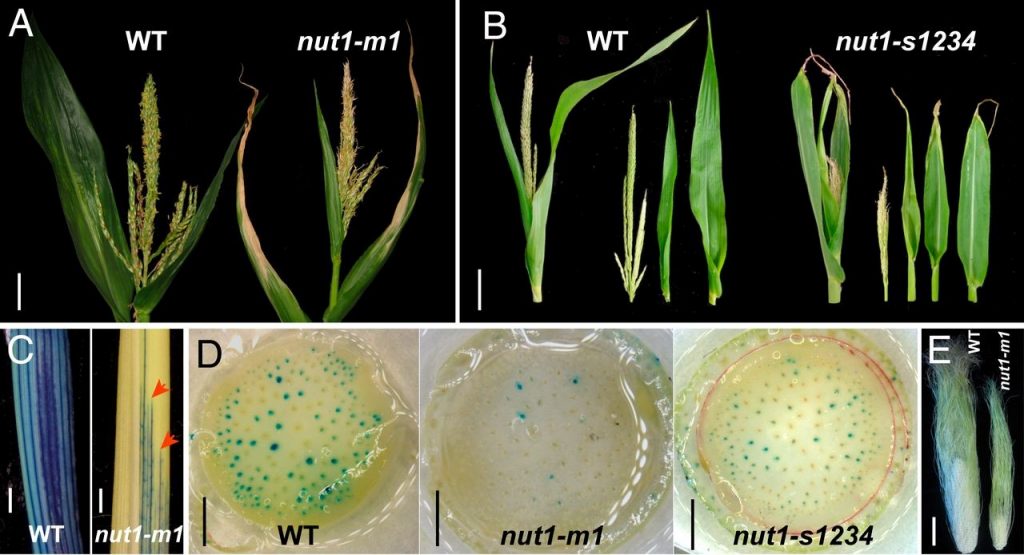
A protoxylem-specific NAC transcription factor modulates heat and drought stress in maize (PNAS)
Excessive heat and water deficit coincide with flowering and result in developmental defeats such as male floral organs browning, infertile pollen, and failure in fertilization: a syndrome known as “tassel blasting” in maize. The genetic pathway underlying tassel blasting is not well characterized.…
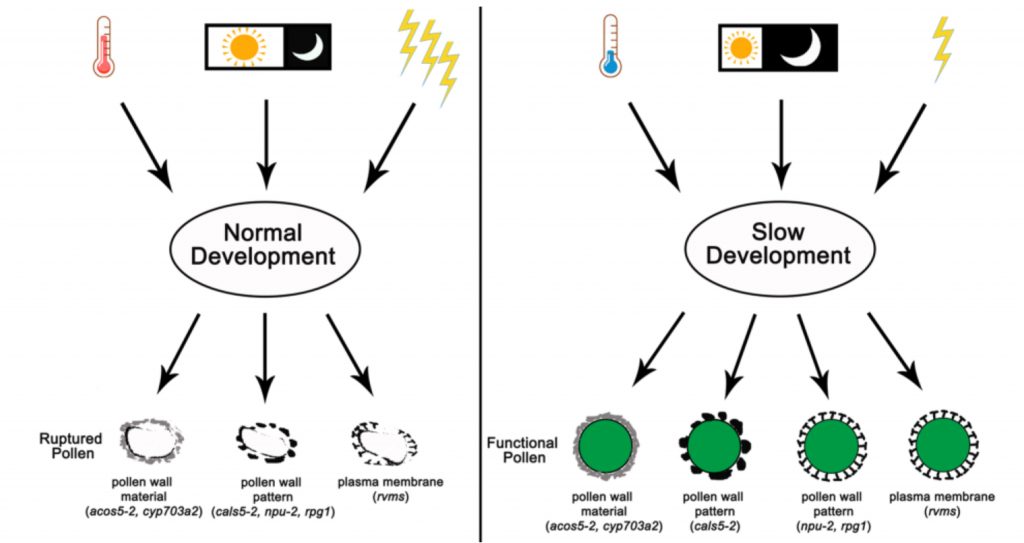
Slow development restores the fertility of photoperiod-sensitive male-sterile plant lines (Plant Physiol.)
There are many well-known advantages to hybrid seeds. However, one obstacle is the tendency of some plants to self-pollinate. The development of genetically male-sterile lines greatly facilitates hybrid seed production, as the maternal male-sterile plant cannot self-fertilize and depends on donor pollen…
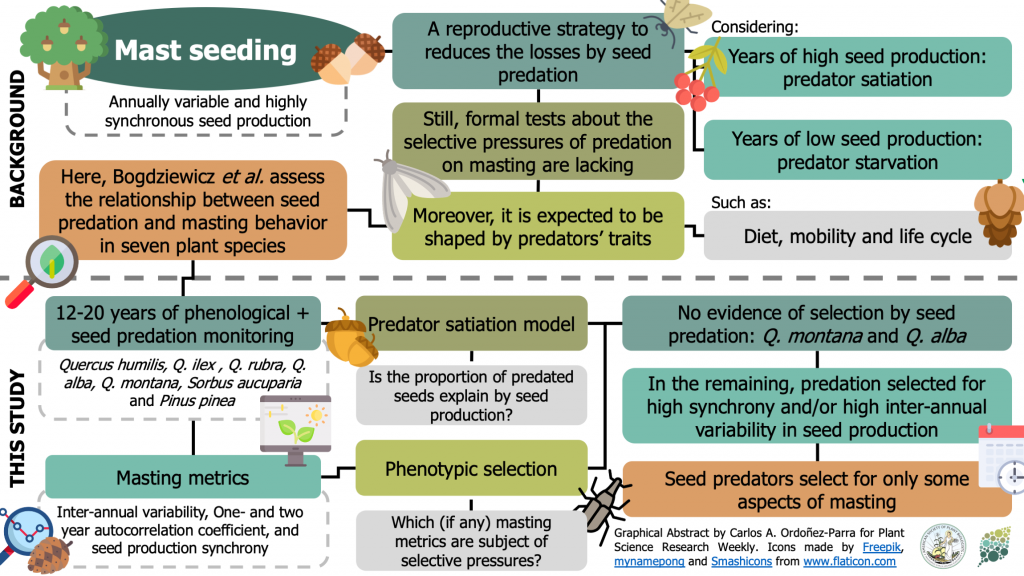
Seed predation selects for reproductive variability and synchrony in perennial plants (New Phytol.) ($)
Instead of regularly flowering and fruiting each year, some long-lived species exhibit annually variable reproduction events. This phenomenon, known as masting, is considered an adaptation to reduce the losses from seed predation: in years of high reproduction, seeds are so abundant that predators become…

